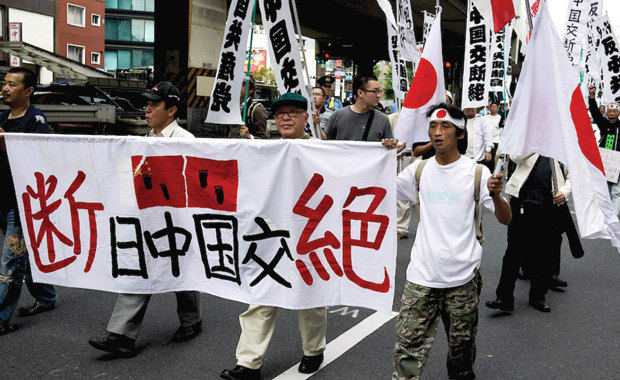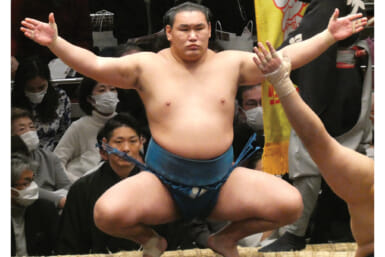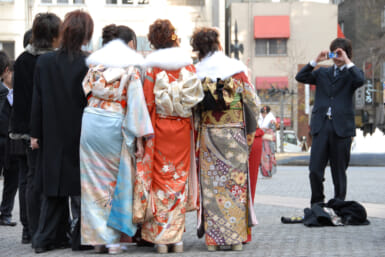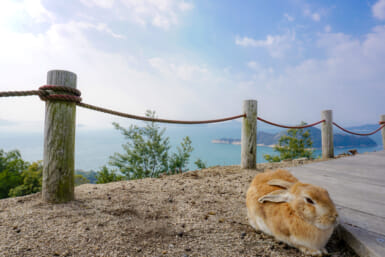Money, Minerals, and ‘Mass’ Protests.
China, Japan and the US have a full list of issues to sort out at the APEC get-together that’s taking place this week in Yokohama.
BY RICHARD SMART
When the leaders of Japan, China and the United States meet at the Asia Pacific Economic Cooperation Summit to be held in Yokohama in early November, all three will appreciate the face time that will allow these major powers of the Pacific to grapple with their economic, territorial and resource issues. Yet, few conclusions are likely to be reached.
Last year, when the Democratic Party of Japan came to power in September, it did so promising to look into the issue of US troops in Japan. The DPJ argued that the need for a US military presence in Japan, and the location of any bases, should be reconsidered. Fast forward a year and prime minister Yukio Hatoyama has resigned, citing the issue as a major reason for doing so. Now his party is pledging to go forward with a 2006 plan agreed on by the United States and a government that was then headed by the Liberal Democratic Party — a plan which does not enjoy wide support among the population.
Currently, the DPJ is maintaining a balancing act. While voters have expressed their frustration with the party — the opposition LDP and its allies control the upper house of parliament after winning a July vote — general elections do not have to take place until 2013; so, for now, the DPJ should be able to push forward with its current plan.
The United States will obviously seek reassurances that the current agreement between the two countries is to go ahead. But as with all agreements, conversations and reassurances given in Yokohama, they will be up for renegotiation.
In the meantime, conditions on the west side of the Pacific have taken a swift change in course, with China and Japan at the center of a new dispute. Japan has seen diplomatic ties sour with China in recent months as old disagreements over the small Senkaku island chain, which both nations claim as their own (China under the name of the Diaoyutai), have reemerged. While there is little doubt that at an economic level Japan and China have a need for each other, both nations are now seeing people take to the streets. Protests have spread across China, demanding that the government in Tokyo give up its claim to the islands, while in Japan, nationalists have demanded it stand firm against Beijing.
The dispute has its origins in more than 100 years of history. Japan claimed the small chain of islands in 1895 as it aggressively expanded overseas in the Meiji Era. China did not dispute the nation’s claim until 1971, when a group of scientists said that it was possible that there were oil reserves under the islands. Since then, high rhetoric and occasional protests have been the norm, with China arguing that the islands are rightfully theirs and were taken by an aggressive, expansionist Japan. Tokyo has retorted that China does not have a historical claim to the islands.
The debate was inflamed in September when a Chinese fishing vessel allegedly rammed a Japanese boat near the islands. Tokyo claims to have video evidence that the Chinese boat was at fault and held the captain of the vessel for around two weeks. That evidence, however, has not been released, and local media reports suggest that the DPJ fears retaliation if it goes public with the video.
Both at the Asia Pacific Economic Cooperation (APEC) Summit and in the weeks before, Japanese leaders are expected to discuss the issue with their counterparts in China. As is often the case in disputes such as these between the two nations, little lasting damage is likely to be done, as over time the rhetoric will cool and trade figures are likely to see little movement. The face time at events such as the one in Yokohama, however, will be seen as an opportunity by the nations to ease tensions, particularly given China’s refusal to meet prime minister Naoto Kan at an ASEAN meeting in late October.
But this is all background in a sense, with large questions on the future of the global economy looming — not that there isn’t escalating tension in that realm as well. Global exchange rates have left the United States and Japan in turmoil, and fingers have been pointed at China. The Japanese yen is currently soaring against the US dollar, and in the United States, concerns are being raised about the weakness of the Chinese currency, the renminbi, which many critics claim is been kept artificially low in order to maintain the country’s competitive advantage in global trade.
After a summer in which the yen kept rising, Oct. 25 saw the dollar hit a 15-year low against the Japanese currency. This is bad for Japan: With the yen so strong, it loses a competitive advantage in its exports as its goods become more expensive.
The United States knows something about this, having seen manufacturers go bust in the face of competition from Chinese factories producing cheaper goods. Influential figures such as US economist Paul Krugman have been vocal in pushing for China to allow its currency to appreciate, even as questions remain as to how much help a raise in the value of the renminbi would have — other issues, such as the current state of US industry, are just as much a reason for the country’s dour economy, according to many analysts.
With so many economies in trouble, currency questions have moved up the agenda for many other nations as well. At an Oct. 23 meeting of G20 nations in South Korea, which included delegations from the United States, China and Japan, international leaders vowed to allow markets to determine the value of currencies and to avoid interventions that could lead to a “currency war.” The effectiveness of these actions, and how nations keep their promises in South Korea, is yet to be seen.
And then there is the surprising new issue of rare earth elements, which is sure to rear its head at APEC (see Jeff Kingston sidebar at the bottom for further analysis). As the Senkaku dispute heated up, China allegedly cut off its supply of the materials, which are needed for the manufacture of many high tech products made in Japan (and elsewhere), leaving the nation scrambling to find new areas from which to mine the resource.
According to the Japanese Ministry of Economy, Trade and Industry, the country depends on China for 90 percent of rare earth metals such as cerium oxide, neodymium and samarium. Vice Minister of the Economy Yoshikatsu Nakayama has said that with the embargo from China, which currently produces 97 percent of the world’s supply, Japan’s stocks are likely to dwindle down by the spring. On Oct. 22, METI announced that it aimed to pen a deal with Vietnam to mine the metals from the southeast Asian nation. Without them, Japan would not be able to produce parts used in high-tech goods including hybrid vehicles and cell phones that require rechargeable batteries, high-powered magnets and miniaturized motors — areas where the nation has so far staked out a long-term competitive advantage.
For its part, China has denied that there is an embargo and claims that any end to exports of rare earth metals is simply the consequence of more stringent customs checks. China has also said that there is a need for the nation to reduce its exports due to concerns that supplies of the elements may run out within the next two decades.
The United States has also seen the issue of rare earths rise up the agenda over the last year. In March, the RESTART Act (Rare Earth Supply Technology And Resource Transformation Act) was introduced to Congress in Washington D.C. by Representative Mike Coffman (Republican) of Colorado.
“There is no rare earth element mining taking place in North America, and with worldwide demand growing exponentially, the situation is only going to get worse,” Coffman said in March. “Rare earth elements are critical to high-technology industries and many critical weapons systems. It is a critical national security issue with potentially severe consequences. The looming crisis can be averted, but the United States needs to act now.”
With such issues on the agenda, the three nations are likely to have much more to talk about than they had bargained for only a few months ago. Moving forward on such complex problems, however, is not likely to happen overnight. But at least in Yokohama, decision makers from the three nations will have a chance to talk, and hopefully even be able to advance such talks a little further.
What’s the big picture?
eff Kingston, professor of Asian studies at Temple University in Tokyo and the author of “Contemporary Japan: History, Politics, and Social Change since the 1980s,” shares his thoughts on key issues at the upcoming conference.
China, Japan, the Senkaku Islands & rare earth elements
“China badly overplayed it’s hand in this situation. It has seriously undermined a decade of diplomacy aimed at reassuring the rest of the region that a rising China is not a threatening China. It’s interesting that the Pentagon has for several years been trying to portray China as a dangerous growing regional power with little success. Now, Beijing has managed to convince everyone that the Pentagon may have been right after all.
“China is interested in downstream processing, so it makes sense for the nation’s long-term goals. They want to create jobs in these next generation industries, but clearly the timing was linked to the dispute over the Senkaku Islands. It shows that China is willing to take advantage of its economic power to get its way with Japan. Because of this, the bilateral relationship is likely to be scarred.“Rare earth minerals are not, however, as rare as one would think. Japan is likely to tap into not only resources in the US, but also in Vietnam, Mongolia and Australia. Clearly, what China has done here sent a wake-up call to the Japanese that they are not a reliable supplier and alternatives need to be found. There is also a black market in rare earths that could be used to make up any shortfalls.
“On the entire situation, China has been very clumsy. Normally speaking, China is very deft, but this isn’t like them. I’m surprised they overreacted so badly to the Senkaku dispute and they really need to repair the damage done. Japan realizes how dependent it is on China, and it is now looking to build strategic relationships with other countries, such as India.”
Currency problems
“I don’t think we have seen an end to competitive devaluations. There is no chance of an accord coming any time soon. They are trying to work out a way to manage currencies, and China are not the worst player here. The Koreans and the Taiwanese, for example, have also manipulated their currencies. There has been a lot of manipulation of currencies — when an economy is in a bad time there is certainly that temptation to put the pedal down on exports, and the way to do that is to make your currency cheaper. The fundamental problem is slow, stagnant growth in the world economy, which increases the temptation to boost exports.”
US bases in Okinawa
“While things have calmed down outside of Okinawa —
I think the Senkaku dispute has convinced many Japanese of the need for the US alliance — but down there, antibase sentiment remains vibrant.”
External Link:
Asia Pacific Economic Cooperation Summit











